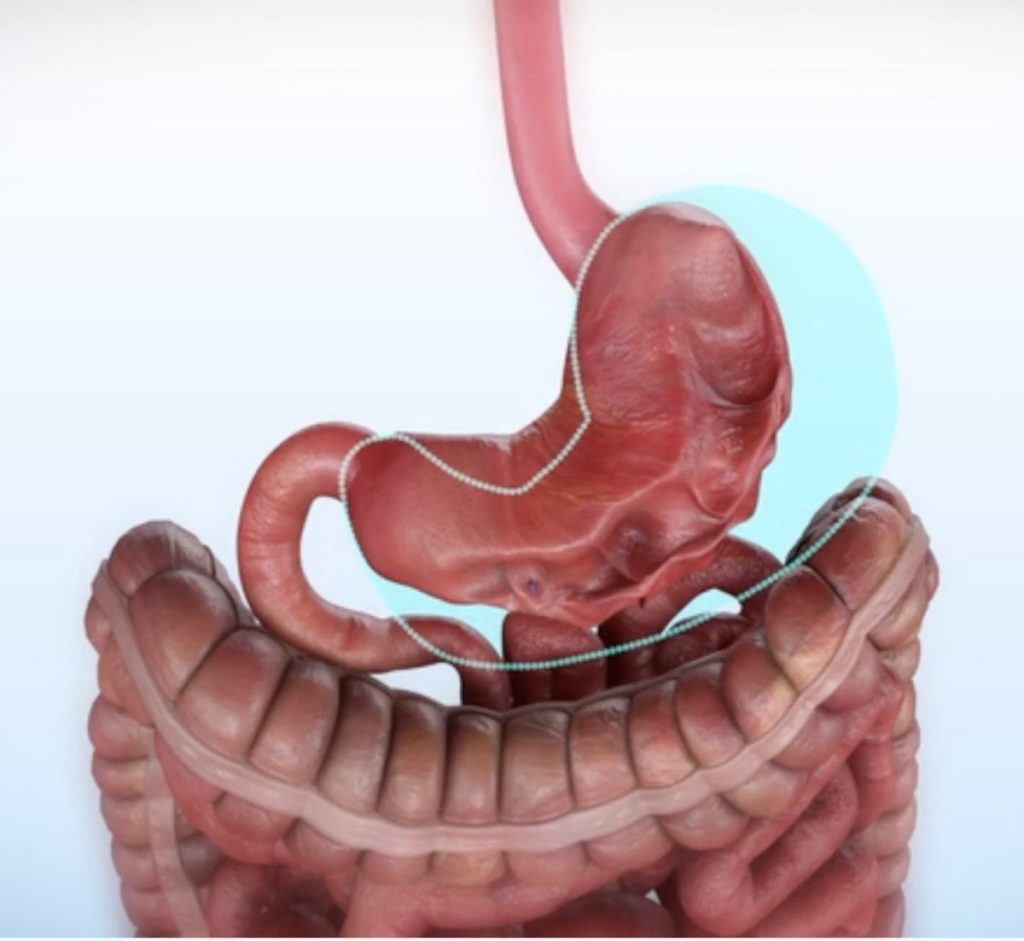The Science Behind Endoscopic Sleeve Gastroplasty
Endoscopic Sleeve Gastroplasty (ESG) is a revolutionary weight loss procedure that offers a minimally invasive alternative to traditional bariatric surgeries. It combines the latest advancements in endoscopic technology with the principles of sleeve gastrectomy to achieve significant weight loss and improve overall health.
Understanding the Procedure
During ESG, a flexible endoscope is inserted through the mouth and into the stomach. The endoscope is equipped with a suturing device that allows the surgeon to create a series of sutures or stitches along the inside of the stomach. These sutures effectively reduce the stomach’s capacity, creating a smaller sleeve-shaped organ. The procedure does not involve any incisions or removal of any portion of the stomach.
How Endoscopic Sleeve Gastroplasty Works
Endoscopic Sleeve Gastroplasty works by reducing the size of the stomach, limiting the amount of food it can hold. The smaller stomach restricts food intake, leading to a feeling of fullness with smaller portions. Additionally, the procedure alters the hormones involved in appetite regulation, further contributing to weight loss.
ESG also affects the way food is digested, which can result in decreased calorie absorption. By bypassing a section of the stomach where food is normally broken down, ESG helps individuals achieve their weight loss goals more effectively.
The Benefits of a Minimally Invasive Approach
One of the significant advantages of ESG is that it is a minimally invasive procedure. Unlike traditional bariatric surgeries, ESG does not require large incisions or the removal of any part of the stomach. This results in reduced postoperative pain, a shorter hospital stay, and a faster recovery time.
Furthermore, ESG carries a lower risk of complications compared to invasive surgeries. The absence of incisions reduces the risk of infection and avoids potential complications associated with wound healing. ESG also offers the advantage of being reversible and adjustable, making it a versatile choice for weight loss treatment.
Is Endoscopic Sleeve Gastroplasty Right for You?
Endoscopic Sleeve Gastroplasty is suitable for individuals who have a body mass index (BMI) between 30 and 40 and are struggling to lose weight through conventional methods. It is an ideal choice for those seeking a less invasive treatment option with potential benefits that rival those of traditional weight loss surgeries.
Who Is an Ideal Candidate for Endoscopic Sleeve Gastroplasty?
Ideal candidates for ESG are individuals who have a strong commitment to making long-term dietary and lifestyle changes. While ESG can lead to significant weight loss, it is essential to adopt healthy eating habits and regular exercise to maintain the results over time.
It is crucial to consult with a healthcare professional before considering ESG to ensure that it is the right choice for you. They will evaluate your medical history, current health condition, and weight loss goals to determine whether ESG is a suitable option.
Risks and Complications
Like any medical procedure, ESG does carry some risks. The potential risks and complications of ESG include infection, bleeding, perforation of the stomach, and adverse reactions to anesthesia. However, these risks are relatively rare, and the procedure has a favorable safety profile compared to traditional weight loss surgeries.
It is vital to discuss the potential risks and benefits with your healthcare provider to make an informed decision about pursuing ESG as a weight loss treatment option.
Comparing Endoscopic Sleeve Gastroplasty to Other Weight Loss Methods
When comparing ESG to other weight loss methods, there are several factors to consider.
One of the main benefits of ESG over other weight loss surgeries, such as gastric bypass or gastric sleeve, is its minimally invasive nature. This means less pain, a faster recovery, and a reduced risk of complications postoperatively.
ESG is also a reversible procedure, unlike more invasive surgeries. This means that if necessary, the sutures can be adjusted or removed, allowing for further customization of weight loss goals.
While ESG may not result in the same level of weight loss as some more invasive procedures, it is an effective option for individuals with a lower BMI who are looking to achieve significant weight loss without the risks associated with open surgery.
Preparation for Endoscopic Sleeve Gastroplasty
Dietary and Lifestyle Changes
Prior to undergoing ESG, your healthcare team will likely recommend making dietary and lifestyle changes to prepare your body for the procedure. These changes may include following a specific diet, maintaining a regular exercise routine, and quitting unhealthy habits such as smoking or excessive alcohol consumption.
Adhering to these recommendations can optimize your body’s readiness for the ESG procedure and improve the chances of a successful outcome.
Pre-procedure Consultation
Before undergoing ESG, you will have a consultation with your healthcare provider to discuss the procedure in detail. This consultation will involve a thorough evaluation of your medical history, physical examination, and any necessary lab tests. It is an opportunity for you to ask any questions or express any concerns you may have about the procedure.
The healthcare provider will also provide you with specific instructions on fasting, medication management, and any other necessary steps to ensure a safe and successful procedure.
What to Expect On the Day of the Procedure
On the day of the ESG procedure, you will typically be required to fast for a certain period to ensure your stomach is empty. Your healthcare team will provide you with specific instructions on when to stop eating and drinking before the procedure.
The procedure itself is performed under sedation or general anesthesia to ensure your comfort. The endoscope is inserted through your mouth and into your stomach, allowing the surgeon to perform the necessary suturing to create the sleeve-shaped stomach.
The entire procedure usually takes about one to two hours, after which you will be monitored in a recovery area before being discharged home the same day.
Post-Procedure Care and Recovery
Immediate Aftercare Instructions
After the ESG procedure, your healthcare team will provide you with specific aftercare instructions to follow. These instructions may include dietary guidelines, pain management strategies, and recommendations for physical activity.
It is crucial to follow these instructions diligently to aid in the healing process and ensure the best possible outcomes.
Long-Term Strategies for Maintaining Weight Loss
While ESG can contribute significantly to weight loss, long-term success requires ongoing commitment to dietary and lifestyle changes. Your healthcare provider will work with you to develop a comprehensive plan for maintaining weight loss, including recommendations for healthy eating habits, regular exercise, and ongoing support.
Monitoring your progress and making necessary adjustments to your lifestyle can help you sustain your weight loss over time and enhance your overall health and well-being.
Follow-up Appointments and Monitoring Progress
Following the ESG procedure, you will have regular follow-up appointments with your healthcare provider. These appointments allow for the monitoring of your progress, evaluation of the procedure’s effectiveness, and the opportunity to address any concerns or challenges you may be facing.
Your healthcare provider may also recommend additional support services, such as nutritional counseling or support groups, to assist you in your weight loss journey.
In conclusion, Endoscopic Sleeve Gastroplasty is a transformative weight loss procedure that offers a minimally invasive option for individuals struggling with obesity. By understanding the science behind ESG, its benefits, and its potential risks, individuals can make an informed decision about whether it is the right choice for their weight loss goals. Proper preparation, adherence to post-procedure care and recovery, and ongoing support are essential elements in maximizing the long-term success of ESG. Whether ESG is the right option for you, consult with a healthcare professional to explore the possibilities and embark on the journey to a healthier life.
FAQ
Question: What is Endoscopic Sleeve Gastroplasty (ESG)? Answer: Endoscopic Sleeve Gastroplasty (ESG) is a minimally invasive weight loss procedure that reduces the stomach’s capacity through sutures.
Question: How does Endoscopic Sleeve Gastroplasty work? Answer: Endoscopic Sleeve Gastroplasty works by limiting food intake, altering hormone regulation, and affecting digestion for decreased calorie absorption.
Question: What are the benefits of ESG compared to other weight loss methods? Answer: ESG is less invasive, reversible, and effective for significant weight loss in individuals with a lower BMI.
Question: Who is a suitable candidate for Endoscopic Sleeve Gastroplasty? Answer: ESG is suitable for individuals with a BMI between 30 and 40 who are committed to long-term dietary and lifestyle changes.
Question: What are the potential risks of ESG? Answer: Potential risks of ESG include infection, bleeding, stomach perforation, and adverse reactions to anesthesia, though these risks are relatively rare.
Question: How should I prepare for ESG? Answer: Preparation for ESG involves dietary and lifestyle changes, consultation with healthcare professionals, and fasting on the day of the procedure.
Question: What is the post-procedure care and recovery process for ESG? Answer: Post-procedure care and recovery include following aftercare instructions, adopting long-term strategies for weight maintenance, and regular follow-up appointments.
Question: How does ESG compare to other weight loss surgeries? Answer: ESG is less invasive, carries a lower risk of complications, and is reversible, making it a versatile choice for weight loss treatment.
Useful Resources:
- Mayo Clinic – Official Website
- Johns Hopkins Medicine – Official Website
- American Society for Metabolic and Bariatric Surgery – Official Website
- National Institute of Diabetes and Digestive and Kidney Diseases (NIDDK) – Official Website
- Centers for Disease Control and Prevention (CDC) – Official Website
- WebMD – Official Website
- Bariatric Surgery Source – Educational Resource
- Obesity Coverage – Educational Resource





